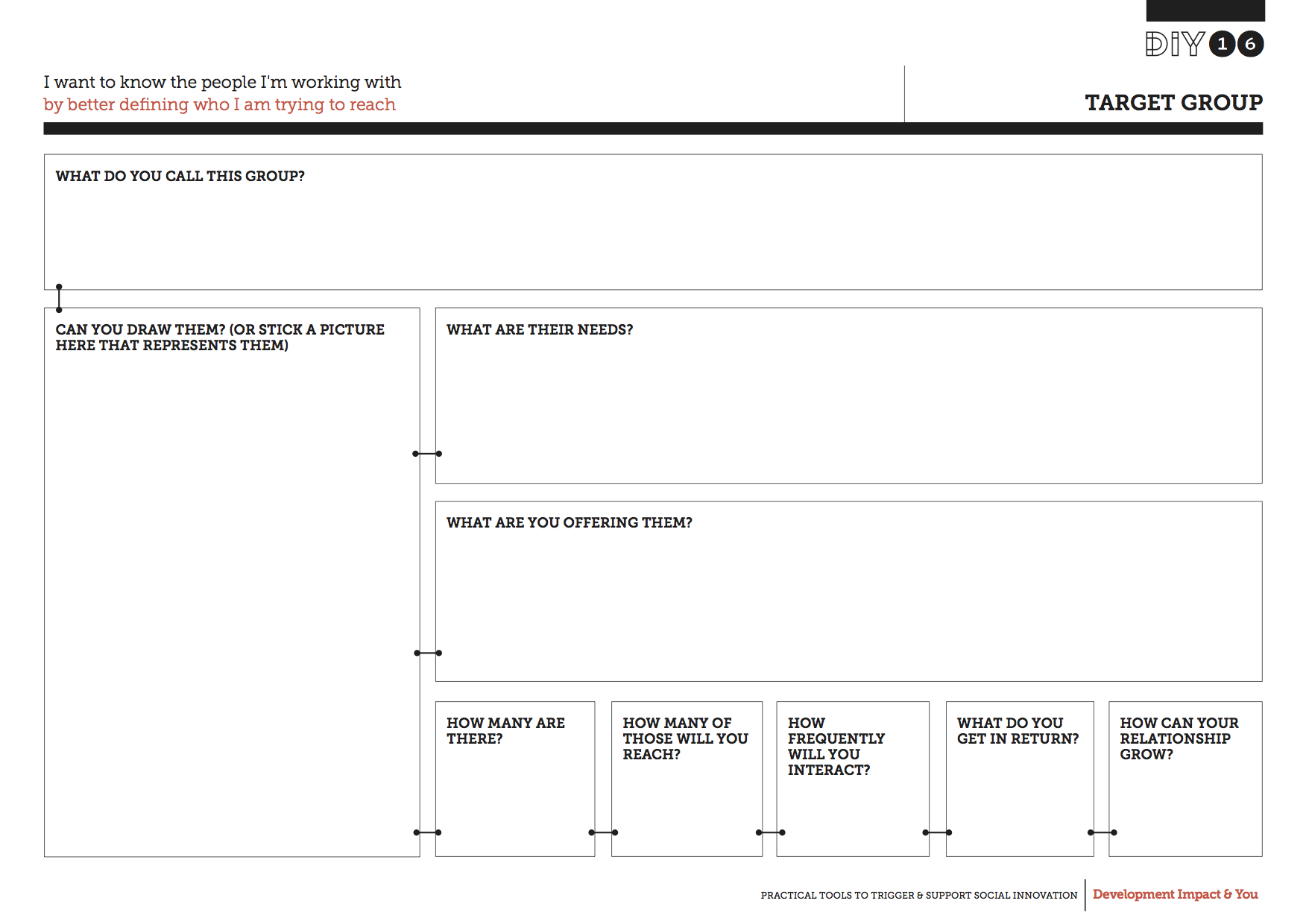How to gain better insight into the groups of people you want to cater to, and the kind of needs they have, is a fundamental question for every project or organisation. The Target Group tool is a quick and easy way to work out an overview and develop an understanding of the different people your work might reach, and the resources you need to do so.
This tool is probably best used when you are trying to work out some initial ideas about who you want to cater to, and why. It is also a nice and effective way to share this information with others.

